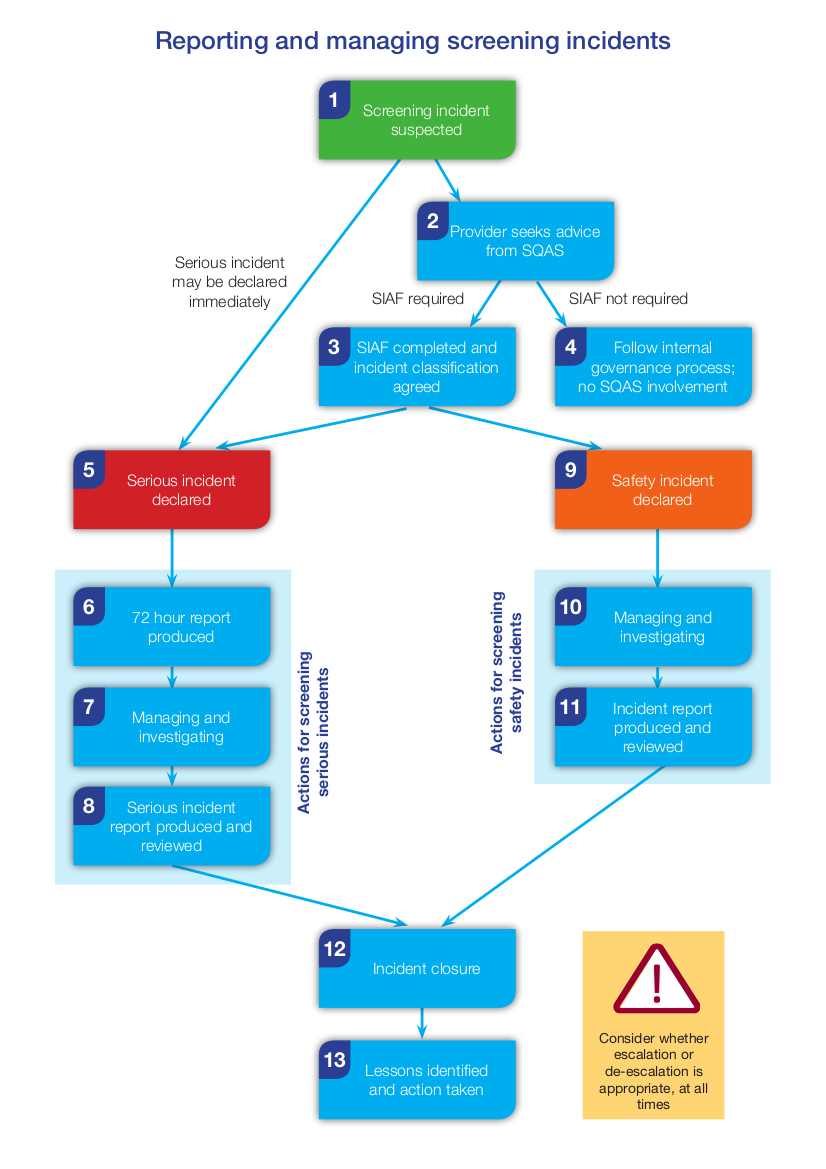
We expect local screening services to use our guidance on Managing Safety Incidents in the NHS Screening Programmes if they think they have a safety incident or serious incident. It’s relevant to all 11 national population screening programmes. This new version replaces the previous one from October 2015.
It gives definitions and characteristics of screening incidents. It also tells you the steps to take from finding the problem to closing the incident and sharing the learning.
The first step…
It’s really important to get expert help from screening and public health specialists as soon as possible. This will include:
- regional screening quality assurance teams, who advise, support and share learning
- screening and immunisation teams, who commission and oversee NHS screening programmes, working within NHS England
Differences in the new guidance
We hope the new guidance is easier to follow. We’ve made changes after listening to screening staff, screening and immunisation teams and regional screening quality assurance teams.
The changes include:
- an easier to use screening incident assessment form
- more flexible incident classifications – so that time consuming investigations are only recommended when really needed
- clarification that safety incidents should be dealt with and closed down as quickly as serious incidents – they are less serious and should be easier to deal with
- added links to useful guidance such as applying the duty of candour to screening programmes
- an expanded and updated glossary
Why it is needed
Screening safety gets special attention because:
- the public rightly expects NHS screening to be high quality and safe
- the NHS invites apparently healthy people for screening – this creates an extra obligation to sort out quality problems
- lots of people can be affected by a screening incident because of the numbers screened
- if the screening is not up to standard, it can harm individuals and do more harm than good for the population
- NHS screening typically involves multiple clinical teams and organisations – screening incidents often affect the whole screening pathway
- we want to prevent the same incidents happening across the country
Reporting and managing screening incidents lead to national as well as local actions to improve services. We’ve blogged about some of them such as checks and audits in sickle cell and thalassaemia and preventing incidents in diabetic eye screening.
Next steps
We are working with NHS Improvement and NHS England so that our guidance continues to align with NHS guidance on serious incidents.
If you work in an NHS screening programme and think there is a safety problem please contact your regional screening quality assurance service.
If you have questions, get in touch with the screening helpdesk.
PHE Screening blogs
PHE Screening BLOGs provide up to date news from all NHS screening programmes – replacing our previously published newsletters.
You can register to receive updates direct to your inbox, so there’s no need to keep checking for new blogs.